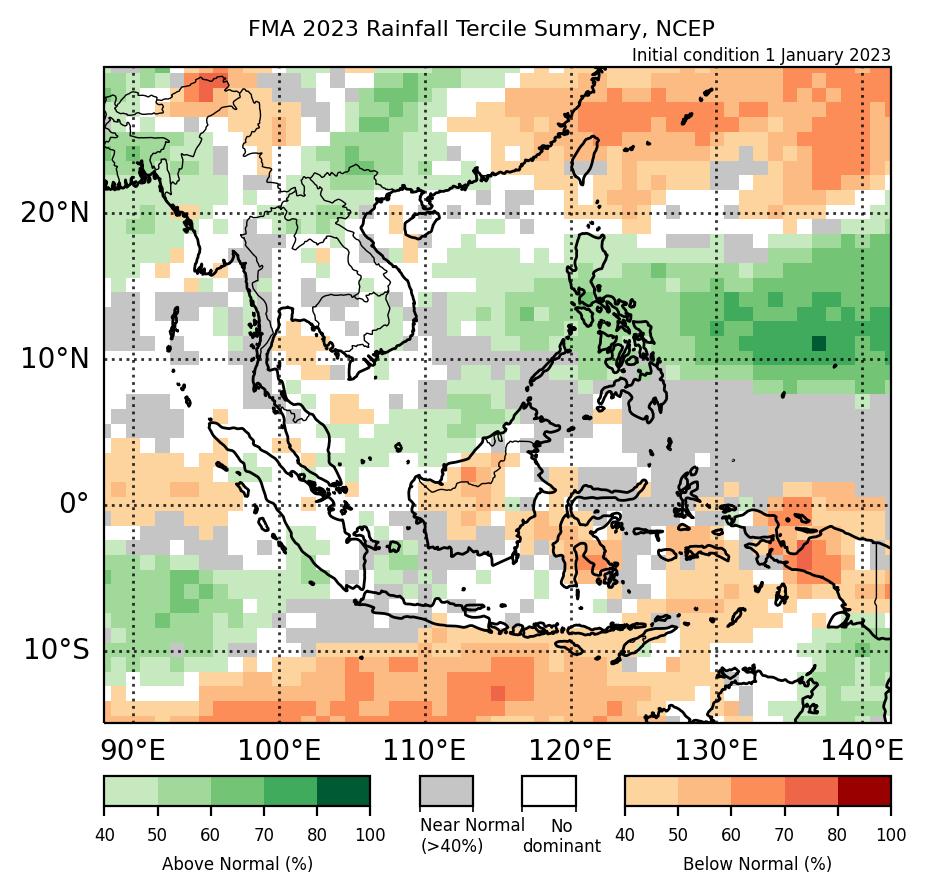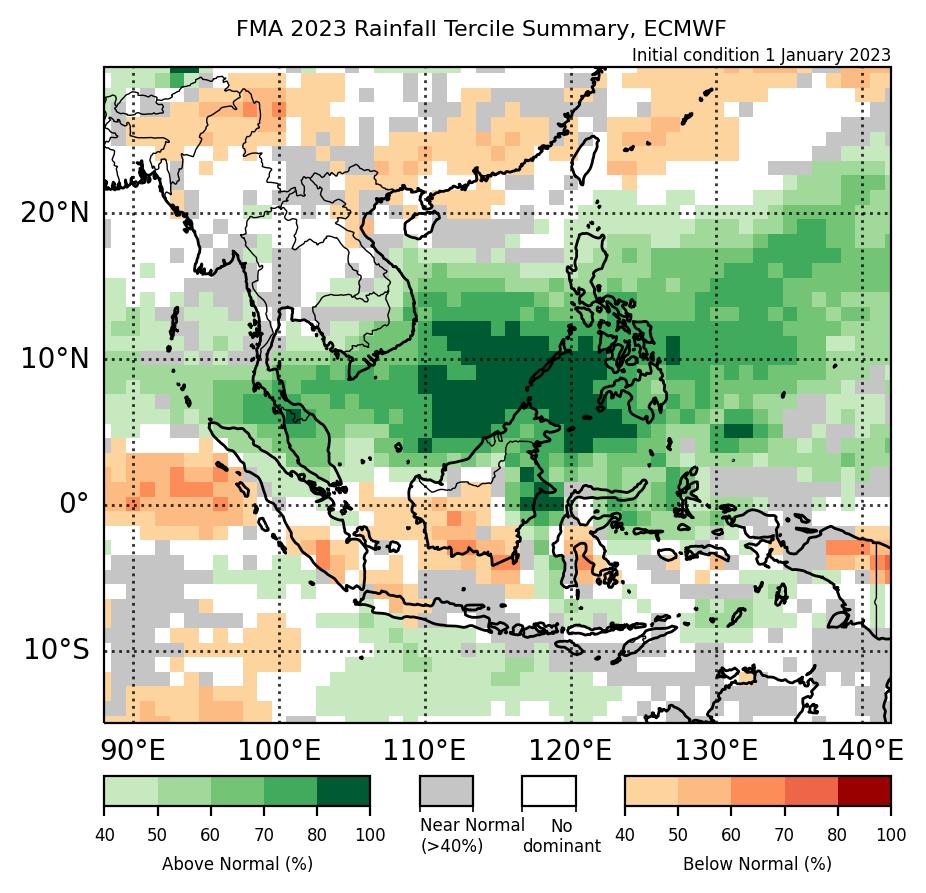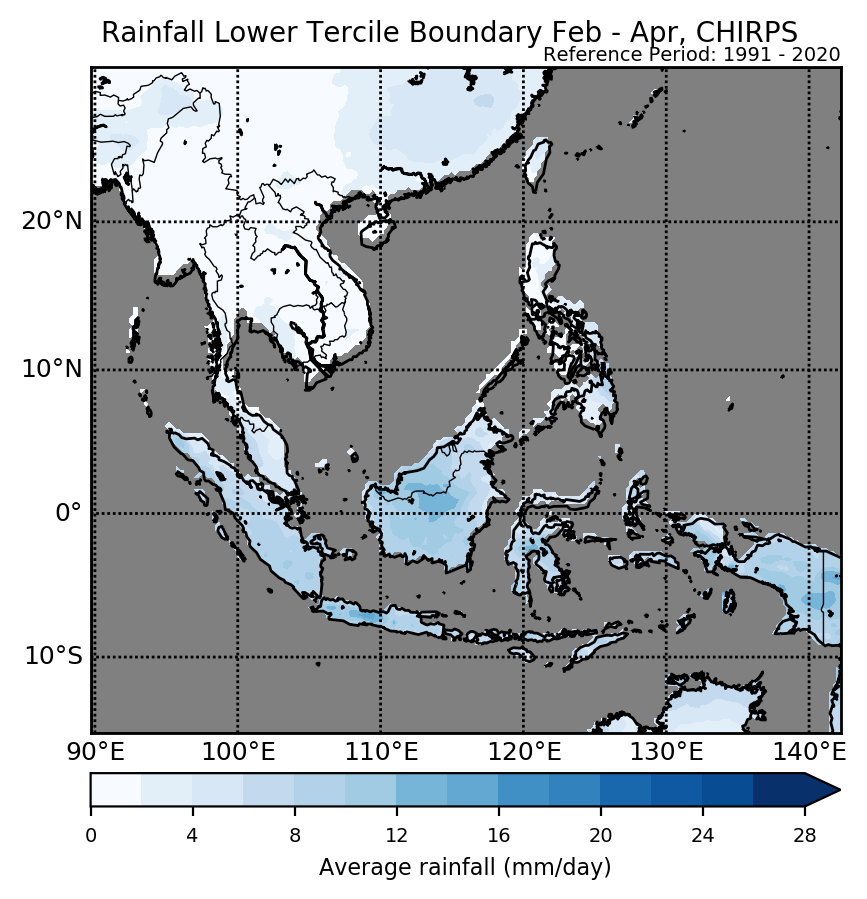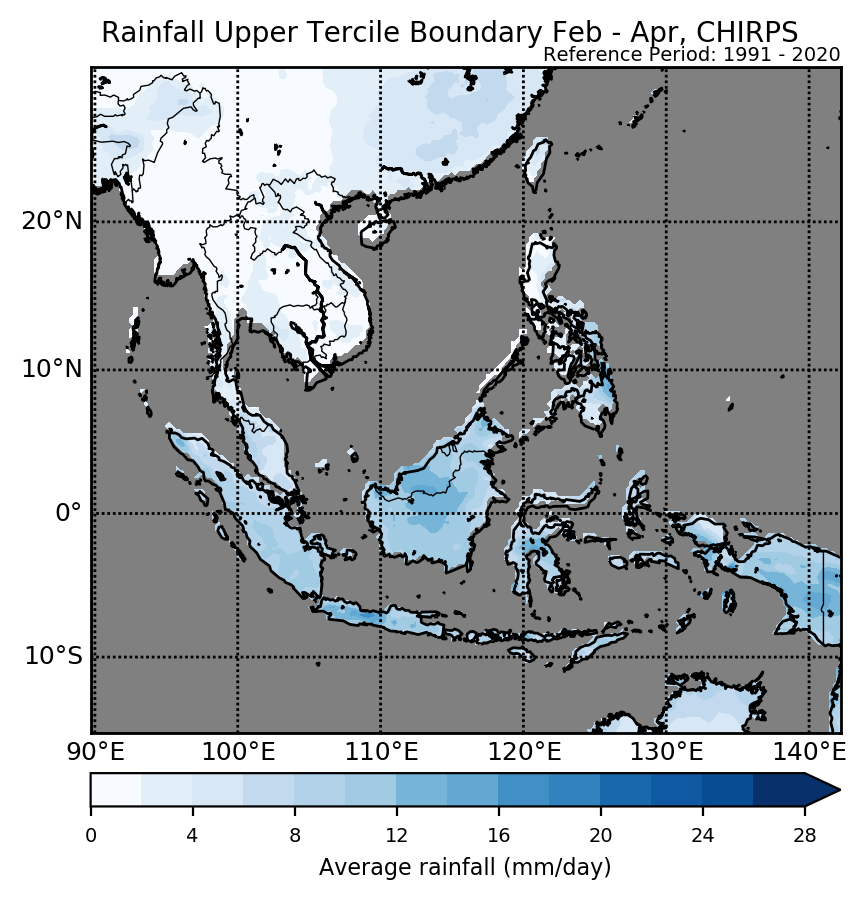Rainfall
Seasonal Rainfall Outlook: February-April 2023 (FMA)
Issued: 28 Jan 2023
For FMA 2023, above-normal rainfall is predicted over much of the northern Maritime Continent.
For FMA 2023, based on the multi-model ensemble (Figure 4), there is an increased chance of above-normal rainfall for much of the northern Maritime Continent while an increased chance of below-normal rainfall is predicted over parts of Borneo. There is some difference between the models in the extent of the above-normal predictions, with the ECMWF model predicting above-normal rainfall over the Malay Peninsula, northern Borneo, and the Philippines (Figure 2), followed by the UK Met Office model predicting above-normal rainfall over northern Borneo and the Philippines (Figure 3), with the NCEP model only predicting an increased chance of above-normal rainfall over the Philippines (Figure 1). The models’ skill is moderate to relatively high for the northern Maritime Continent and low to moderate elsewhere.
For Mainland Southeast Asia, based on the multi-model ensemble (Figure 4), there is an increase in chance of above-normal rainfall for the southeastern portion. However, when looking at the individual models only the ECMWF model predicts above-normal rainfall for most of this region (Figures 1-3). The model’s skill for southeastern Mainland Southeast Asia is moderate. Elsewhere in Mainland Southeast Asia, there is either disagreement between the models, or model skill is low.

Figure 1: Rainfall tercile summary predictions of NCEP model for FMA 2023 (contains modified Copernicus C3S information).

Figure 2: Rainfall tercile summary predictions of ECMWF model for FMA 2023 (contains modified Copernicus C3S information).

Figure 5: Average climatological rainfall's lower tercile boundary for FMA based on CHIRPS (Reference period: 1991-2020).

Figure 6: Average climatological rainfall's upper tercile boundary for FMA based on CHIRPS (Reference period: 1991-2020).
The qualitative outlook is assessed for the region in general. For specific updates on the national scale, the relevant ASEAN National Meteorological and Hydrological Services should be consulted.